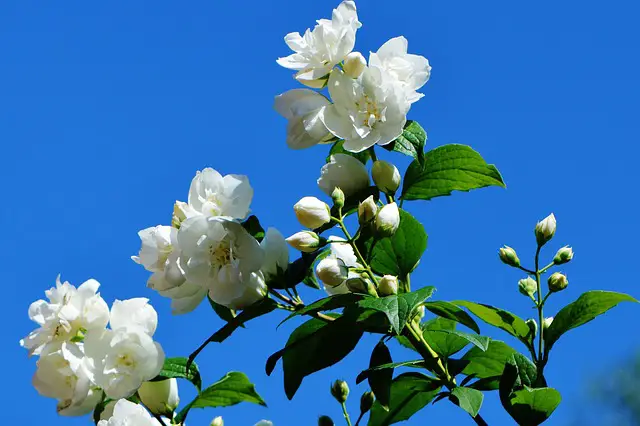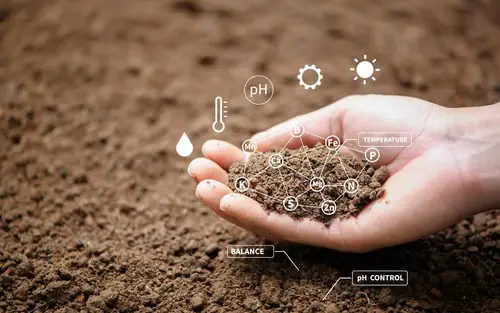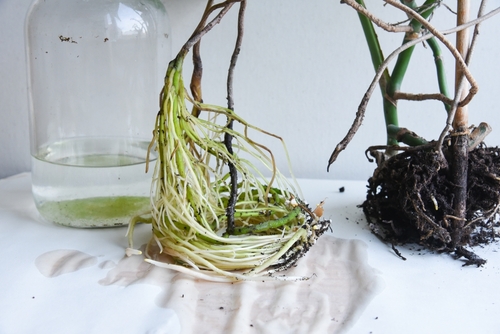Jasmine plants are known for their fragrant flowers and lush green leaves. However, if you notice that the leaves of your jasmine plant are turning yellow, it can be a cause for concern. Yellowing leaves can indicate a range of problems, from overwatering to nutrient deficiencies.
Understanding the jasmine plant is key to figuring out why its leaves are turning yellow. Jasmine plants need plenty of light and moderate temperatures to thrive.
They also require well-draining soil and careful watering to prevent waterlogging. When any of these conditions are not met, it can lead to stress on the plant and cause the leaves to turn yellow.
In this article, we will explore the reasons why jasmine leaves may turn yellow, including the role of watering, light and temperature, nutrient deficiencies, soil and drainage conditions, and pests and diseases.
We will also discuss natural aging and environmental stress, as well as prevention and recovery strategies. By the end of this article, you will have a better understanding of how to care for your jasmine plant and keep its leaves healthy and green.
Key Takeaways
- Jasmine leaves turning yellow can be a sign of a range of problems, including overwatering, nutrient deficiencies, and environmental stress.
- Proper watering, light and temperature, soil and drainage conditions, and pest and disease control are key to preventing yellowing leaves.
- Understanding the needs of your jasmine plant and taking preventive measures can help keep its leaves healthy and vibrant.
Also don’t miss:
- Why Are My Fuchsia Leaves Turning Yellow?
- Why Are My Eggplant Leaves Turning Yellow?
- Why Are My Cyclamen Leaves Turning Yellow?
Understanding Jasmine Plant

Jasmine is a popular flowering plant known for its sweet fragrance and delicate blooms. It is native to tropical and subtropical regions of Asia, Africa, and Australia. There are many species of jasmine, but the most commonly grown varieties are Jasminum officinale and Jasminum sambac.
Jasmine plants are evergreen and can grow up to 15 feet tall. They have shiny, green leaves that are oval-shaped and grow in pairs or whorls. The leaves are arranged alternately on the stem and can grow up to 4 inches long.
Jasmine plants produce small, white or yellow flowers that bloom in clusters. The flowers are usually star-shaped and have a sweet, pleasant fragrance. The flowers can be used to make tea, perfume, and other fragrant products.
Jasmine plants require regular watering and well-drained soil to thrive. They prefer full sun to partial shade and can be grown in containers or in the ground. Jasmine plants can be propagated by seeds, cuttings, or layering.
Jasmine plants can develop yellow leaves for several reasons, including overwatering, underwatering, poor soil quality, pests, and diseases. It is important to identify the cause of yellow leaves and take appropriate action to prevent further damage to the plant.
Jasmine Leaves Turning Yellow – 5 Common Problems
Jasmine plants are known for their fragrant flowers and beautiful foliage. However, if you notice your jasmine leaves turning yellow, it could be a sign of an underlying issue. Here are some possible reasons why jasmine leaves turn yellow:
1. Overwatering
One of the most common reasons for yellowing jasmine leaves is overwatering. When the soil is constantly moist or waterlogged, the roots can’t absorb oxygen, leading to root rot and yellowing leaves. To prevent overwatering, make sure to water your jasmine plant only when the top inch of soil is dry.
2. Underwatering
On the other hand, underwatering can also cause jasmine leaves to turn yellow. When the soil is too dry, the plant can’t absorb enough water and nutrients, leading to yellowing and wilting leaves. To prevent underwatering, make sure to water your jasmine plant regularly, especially during hot and dry weather.
3. Pests

Pests such as aphids, spider mites, and whiteflies can also cause yellowing leaves in jasmine plants. These pests suck the sap from the leaves, causing them to turn yellow and eventually fall off. To prevent pest infestations, inspect your jasmine plant regularly and use insecticidal soap or horticultural oil to treat any pests.
4. Nutrient deficiency
A lack of essential nutrients such as nitrogen, iron, and magnesium can also cause yellowing jasmine leaves. To prevent nutrient deficiencies, fertilize your jasmine plant regularly with a balanced fertilizer.
5. Disease
Jasmine plants can also be susceptible to fungal and bacterial diseases, which can cause yellowing leaves. To prevent disease, make sure to keep your jasmine plant in a well-ventilated area and avoid overhead watering, which can spread fungal spores.
Role of Watering
Watering plays a crucial role in maintaining the health of jasmine plants. Both overwatering and underwatering can cause yellowing of leaves. Proper watering techniques are essential to prevent the occurrence of yellow leaves.
Overwatering is one of the most common causes of yellowing leaves in jasmine plants. Waterlogging can occur when the soil remains too wet for an extended period. This can cause the roots to rot, making it difficult for the plant to absorb nutrients. Overwatering can also lead to water stagnation, which can be fatal to the plant.
On the other hand, too little water can also cause yellowing of leaves. When the plant does not receive enough water, it can become dehydrated, leading to leaf discoloration. Proper watering techniques are essential to prevent both overwatering and underwatering.
Jasmine plants thrive in well-drained soil that is moist but not waterlogged. The soil should be allowed to dry out slightly before watering again. It is recommended to water the plant deeply, allowing the water to penetrate the soil and reach the roots.
Irrigation techniques can also affect the health of jasmine plants. It is best to water the plant at the base, avoiding getting the leaves wet. Wet leaves can lead to the growth of fungi and other diseases.
Importance of Light and Temperature

Jasmine plants require a significant amount of sunlight to grow and thrive. Adequate sunlight is essential for the plant to produce chlorophyll, which is responsible for the plant’s green color. Insufficient sunlight can cause the leaves to turn yellow, eventually leading to plant death.
On the other hand, too much sunlight can also be harmful to the plant. Direct sunlight during the hottest part of the day can cause the plant to overheat, leading to yellow leaves and stunted growth. It is essential to provide the plant with the right amount of sunlight, especially during the summer months.
Temperature is another crucial factor that affects the growth and health of jasmine plants. These plants prefer a moderate temperature range of 60 to 75 degrees Fahrenheit. If the temperature falls below or rises above this range, the plant may experience stress, leading to yellow leaves and poor growth.
During the summer months, it is essential to protect the plant from excessive heat. Placing the plant in direct sunlight during the hottest part of the day can cause the leaves to wilt and turn yellow. Providing shade or moving the plant to a cooler location can help prevent this problem.
Nutrient Deficiencies
Jasmine plants are susceptible to nutrient deficiencies, which can cause leaves to turn yellow. Chlorosis is a common condition that results when the plant lacks nutrients, usually iron.
However, deficiencies in zinc and manganese can also cause chlorosis, which begins with stunted growth and pale green or yellowing leaves, depending on the severity of the deficiency.
Nitrogen deficiency can also cause yellowing of leaves. Nitrogen is an essential nutrient for plant growth and development, and a lack of it can lead to stunted growth, yellowing leaves, and reduced flower production.
Magnesium deficiency is another common problem that can cause yellowing leaves. Magnesium is a critical component of chlorophyll, the pigment that gives plants their green color. Without enough magnesium, chlorophyll production is reduced, and leaves may turn yellow.
To diagnose a nutrient deficiency, it is important to examine the plant’s leaves carefully. Different nutrient deficiencies can cause different patterns of yellowing. For example, nitrogen deficiency typically causes yellowing of older leaves first, while iron deficiency can cause yellowing of the entire leaf, including the veins.
To correct a nutrient deficiency, it is important to identify the specific nutrient that is lacking and provide it to the plant. This can be done by adding fertilizer to the soil or by foliar feeding, which involves spraying the leaves with a nutrient solution.
It is important to follow the instructions on the fertilizer carefully to avoid over-fertilizing, which can lead to other problems such as root burn or salt buildup in the soil.
Soil and Drainage Conditions
Jasmine plants thrive in rich, organic, and well-drained soil. Improper soil and drainage conditions can cause yellow leaves on jasmine plants. Here are some factors to consider:
Soil pH Levels

Soil pH levels can affect the growth and health of jasmine plants. Jasmine plants prefer slightly acidic to neutral soil with a pH range of 6.0 to 7.5. If the soil pH is too high or too low, it can lead to nutrient deficiencies, which can cause yellow leaves. Conducting a soil test can help determine the pH levels of the soil and if any adjustments are needed.
Drainage
Poor drainage can cause water to accumulate in the soil, leading to root rot and yellow leaves. Jasmine plants are susceptible to waterlogging, especially when grown in pots. To prevent poor drainage, consider adding organic matter such as coconut fiber or river gravel to the soil to improve drainage.
Alkaline Soil
Jasmine plants do not tolerate alkaline soil, which can cause nutrient deficiencies and yellow leaves. If the soil is too alkaline, consider adding sulfur to lower the pH levels or using an acidifying fertilizer.
Dealing with Pests and Diseases
Jasmine plants are susceptible to pest infestations and diseases that can cause yellowing of leaves. The following are some of the common pests and diseases that can affect jasmine plants:
Pests
1. Mealybugs
Mealybugs are small, soft-bodied insects that feed on the sap of plants. They appear as white, cottony masses on the leaves and stems of plants. Mealybugs can cause yellowing of leaves and stunted growth. To get rid of mealybugs, use insecticidal soap or neem oil.
2. Spider Mites
Spider mites are tiny pests that can cause yellowing of leaves, webbing, and leaf drop. They thrive in hot and dry conditions. To control spider mites, spray the plant with a strong jet of water or use insecticidal soap.
3. Scale Insects
Scale insects are small, immobile pests that attach themselves to the stems and leaves of plants. They can cause yellowing of leaves and stunted growth. To control scale insects, use insecticidal soap or horticultural oil.
Diseases

1. Root Rot
Root rot is a fungal disease that can cause yellowing of leaves, wilting, and stunted growth. It is caused by overwatering or poorly drained soil. To prevent root rot, make sure the soil is well-drained and do not overwater the plant.
2. Other Diseases
Other fungal diseases such as powdery mildew and leaf spot can also cause yellowing of leaves. To prevent these diseases, make sure the plant is well-ventilated and avoid overhead watering.
Natural Aging and Environmental Stress
Jasmine leaves may naturally turn yellow and drop off as the plant ages. This is a normal part of the plant’s life cycle and is not a cause for concern. However, if the yellowing is accompanied by brown spots or the leaves are turning brown, it may be a sign of environmental stress.
Environmental stress can be caused by a variety of factors, including overwatering, underwatering, poor drainage, alkaline soil, low nutrients, low light, or humidity. When the soil is too dry, the leaves may turn red before turning yellow and dropping off.
To prevent environmental stress, it is important to ensure that the plant is getting the right amount of water and nutrients. Jasmine prefers slightly dry soil, so overwatering can cause yellow leaves and even kill the plant. On the other hand, underwatering can cause the leaves to turn brown and dry out.
It is also important to ensure that the soil has good drainage to prevent waterlogging. If the soil is too alkaline, the plant may not be able to absorb nutrients properly, leading to yellow leaves. In addition, low light or humidity can cause stress to the plant, leading to yellowing leaves.
Prevention and Recovery
Preventing yellowing of jasmine leaves is much easier than recovering them once they have turned yellow. Here are a few tips to prevent yellowing of jasmine leaves:
- Proper watering: Overwatering or underwatering can cause yellowing of jasmine leaves. Make sure to water the plant only when the topsoil feels dry to the touch. Water thoroughly and allow the excess water to drain out of the pot. Avoid waterlogging, which can lead to root rot and yellowing of leaves.
- Fertilizer: Jasmine plants require regular fertilization to stay healthy and green. Use a balanced fertilizer with equal amounts of nitrogen, phosphorus, and potassium. Avoid overfertilization, which can lead to yellowing of leaves.
- Organic fertilizer: Using organic fertilizers like compost, manure, or bone meal can provide the necessary nutrients to the plant without causing any harm. Organic fertilizers are slow-release and provide a steady supply of nutrients to the plant.
- Horticultural oil: Applying horticultural oil to the plant can help prevent infestations by pests like spider mites, which can cause yellowing of leaves.
If the jasmine leaves have already turned yellow, here are a few steps to recover them:

- Cut off the yellow leaves: Cutting off the yellow leaves can help the plant focus its energy on new growth and prevent the spread of any disease.
- Check for proper watering: Check if the plant is getting enough water and if the soil is well-draining. Correct any watering issues to prevent further yellowing of leaves.
- Allow the soil to dry out: If the soil is waterlogged, allow it to dry out before watering again. This can help prevent root rot and yellowing of leaves.
- Recover with organic fertilizer: Using organic fertilizers like compost, manure, or bone meal can help recover yellowing jasmine leaves. Organic fertilizers are slow-release and provide a steady supply of nutrients to the plant.
Frequently Asked Questions
Why are my jasmine leaves turning yellow and red?
Yellowing and reddening of jasmine leaves can be caused by various factors, including overwatering, underwatering, nutrient deficiency, pest infestation, or environmental stress. To determine the exact cause, it is important to examine the plant closely and consider the growing conditions.
Why are my jasmine leaves turning yellow and falling off?
Jasmine leaves turning yellow and falling off can be a sign of stress, such as overwatering, underwatering, or exposure to extreme temperatures. It can also be caused by pest infestation, nutrient deficiency, or disease. A thorough examination of the plant and its growing conditions can help identify the root cause.
What causes indoor jasmine plant leaves to turn yellow?
Indoor jasmine plant leaves can turn yellow due to various factors, such as overwatering, underwatering, insufficient light, or poor soil quality. It can also be caused by pest infestation or nutrient deficiency. Providing proper care, such as regular watering and fertilization, can help prevent yellowing of indoor jasmine plant leaves.
Why are my star jasmine leaves turning light green?
Star jasmine leaves turning light green can be a sign of nutrient deficiency, particularly nitrogen. It can also be caused by overwatering or underwatering, pest infestation, or environmental stress. Providing proper fertilization and watering can help address the issue.
Why are my night blooming jasmine leaves turning yellow?
Night blooming jasmine leaves turning yellow can be caused by various factors, such as overwatering, underwatering, nutrient deficiency, or pest infestation. It can also be a sign of environmental stress, such as exposure to extreme temperatures or sunlight.
A careful examination of the plant and its growing conditions can help determine the root cause.
How do you know if jasmine is overwatered?
Overwatering jasmine can cause the leaves to turn yellow and wilt. The soil may also be soggy and have a foul odor. To prevent overwatering, it is important to water the plant only when the top inch of soil is dry to the touch. Providing proper drainage and avoiding waterlogging can also help prevent overwatering.

Hey, I’m Lisa and I’ve been an avid gardener for over 30 years. I love writing, talking and living in the garden! Feel free to connect with me on my socials below


